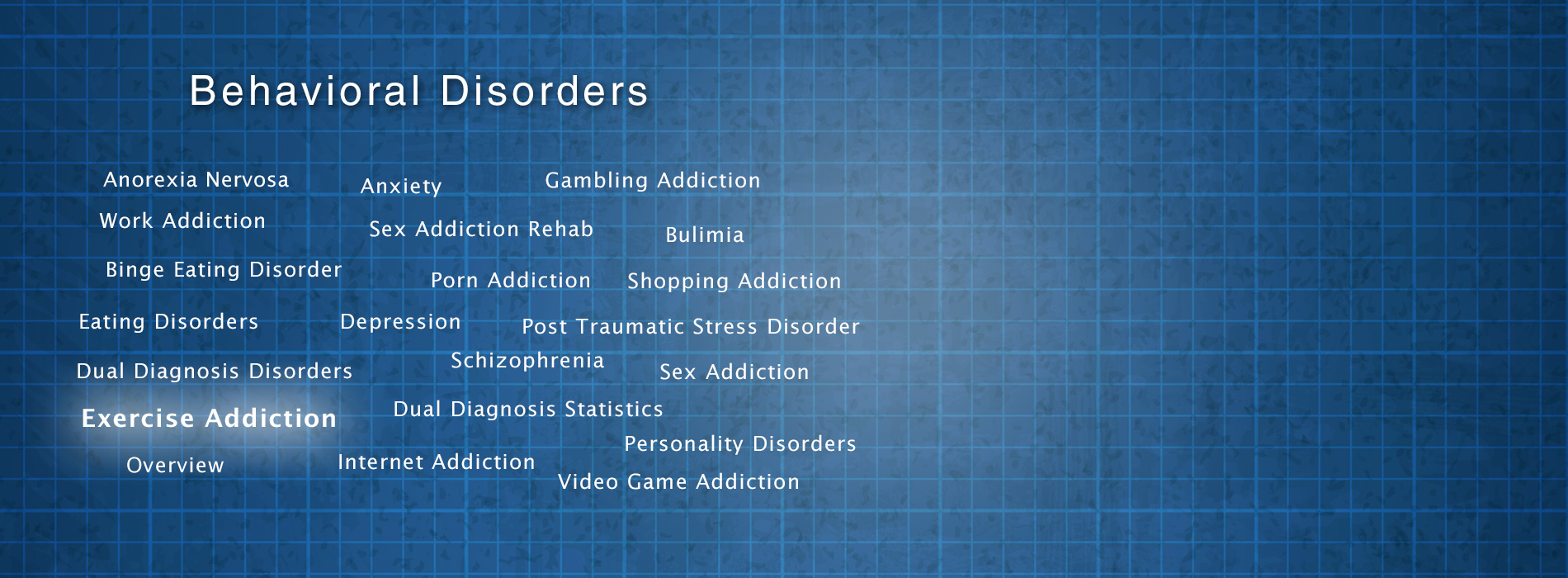Exercise Addiction
Everyone should take some time out of their day to exercise, but when exercise becomes a problem that interferes with normal functioning, it could be considered an addiction. People addicted to exercise feel compelled to exercise to the detriment of personal responsibilities or relationships and use exercise to feel good about themselves. They may exercise even though they are ill or injured.An official diagnosis for exercise addiction is difficult to create, as exercise can be a healthy habit as well as an addictive one. Individuals who are healthy or addicted may experience an exercise high or “buzz” while they are working out. The distinguishing factor between a healthy or addicted individual is the feelings of extreme low, guilt, or shame if they skip a workout. Addicted individuals may also work out to the point of exhaustion or injury or continue to work out despite an injury. Exercise may be prioritized above relationships with family and friends or personal responsibilities, thereby interfering with day-to-day life.
Causes of exercise addiction are not completely understood, but they are not related to self-esteem. Individuals who work out due to fears of becoming overweight are diagnosed with an eating disorder, possibly in addition to exercise addiction, as exercise is used as a way to purge calories or burn fat at an unhealthy level. Instead, exercise addiction is thought to be related to a positive feedback loop in which a person feels a high due to endorphins that rewards them for exercising. In order to achieve the same high, the person must increase their rates of exercise over time, eventually to an unhealthy level. In some cases, withdrawal is experienced when the person stops exercising, causing anxiety, irritability, restlessness, headaches, guilt, or loss of appetite.
At a certain point, exercise stops being healthy and starts to have negative effects on the body. Excessive exercise can lead to a myriad of health problems, including fatigue, exhaustion, myocardial scarring (scarring on the heart), muscle or tendon tearing, elevated resting heart beat, and insomnia. These symptoms then lead to a decrease in performance, which can cause the individual to want to train more to correct it, looping the person into a vicious cycle. Over-exercising can weaken the immune system as the body shunts resources to fuel the exercise instead of the immune system, resulting in more illnesses than normal. Heart-related symptoms – scarring and elevated heart beat – are precursors to heart failure.
Treatment for exercise addiction involves therapy and education on healthy levels of exercise. Therapy will help the individual recognize addictive thoughts and behaviors and correct them. If the exercise addiction is co-morbid (occurring together) with an eating disorder, the eating disorder will be addressed as well through therapy and established meal plans. The more intense the workout, the more rest is needed, so a strict regimen of exercise and resting should be established based on the level of exercise being performed. Rest days should be established where exercising is not allowed. The goal is for balance between exercise and life, not to stop exercising altogether.

